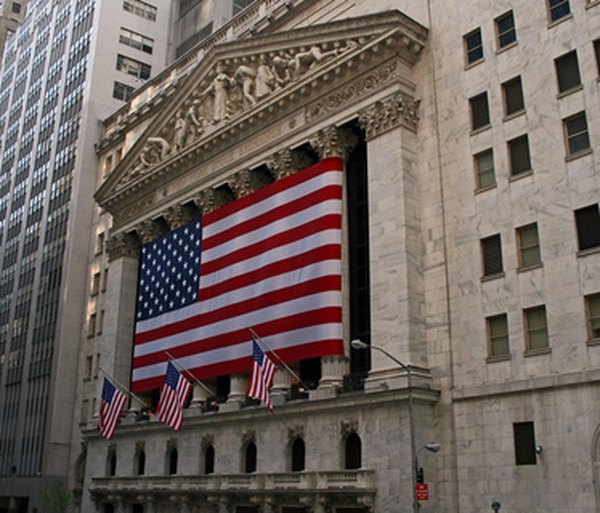The Difference Between the Stock Market & Stock Exchange
The NYSE was the first stock exchange ever formed.
new york stock exchange image by Gary from Fotolia.com
The stock market represents the companies that list equity shares for public investors to buy and sell. Stock exchanges are the infrastructure that facilitate the trading of those equity securities, or stocks. Without a stock exchange, companies would have no formal mechanism on which to list shares, and without a stock market, exchanges would have no reason to exist. Stock exchanges can be electronic or manual, and they provide telling information about the size of the stock market.
Overview
In the U.S., most companies in the stock market decide to list equity shares either on the New York Stock Exchange (NYSE) Euronext or Nasdaq. A select few companies trade on both exchanges. These formal exchanges provide the most transparency and regulatory oversight to stock market participants. Companies may also choose to list shares in the less-regulated over-the-counter stock markets, where there is less price transparency.
Trading Volume
Market participants can learn certain features about the stock market from information collected at stock exchanges. Stock exchanges record the volume of shares traded in a particular company, which is an indication of interest in a particular stock or the level of conviction that investors demonstrated in purchasing or selling shares. Stock exchanges also generate total stock market volume statistics based on buying and selling activity in the sum of companies that list their shares on that platform.
Price
The NYSE Euronext and Nasdaq have practices that ensure that the best possible prices are used in the stock market. These procedures are documented in the bid, which is the highest price investors are willing to pay for a stock, and the asking price, which is the level at which the seller wants to unload the stock. The stock market runs efficiently because of stock exchange procedures, which are designed to keep trading costs down and provide transparency to stock prices.
Standards
Companies must meet financial requirements to list shares on a major exchange. While those standards vary depending on the stock exchange, size of a company and amount of income a business generates, some common themes exist. Generally, a stock's market value cannot fall below a range of between approximately $1 and $3 per share. If a stock price remains below that required level for a a given period, the listing company is in jeopardy of losing its listing on the major exchange, according to the U.S. Securities and Exchange Commission.
References
Resources
Writer Bio
Geri Terzo is a business writer with more than 15 years of experience on Wall Street. Throughout her career, she has contributed to the two major cable business networks in segment production and chief-booking capacities and has reported for several major trade publications including "IDD Magazine," "Infrastructure Investor" and MandateWire of the "Financial Times." She works as a journalist who has contributed to The Motley Fool and InvestorPlace. Terzo is a graduate of Campbell University, where she earned a Bachelor of Arts in mass communication.

